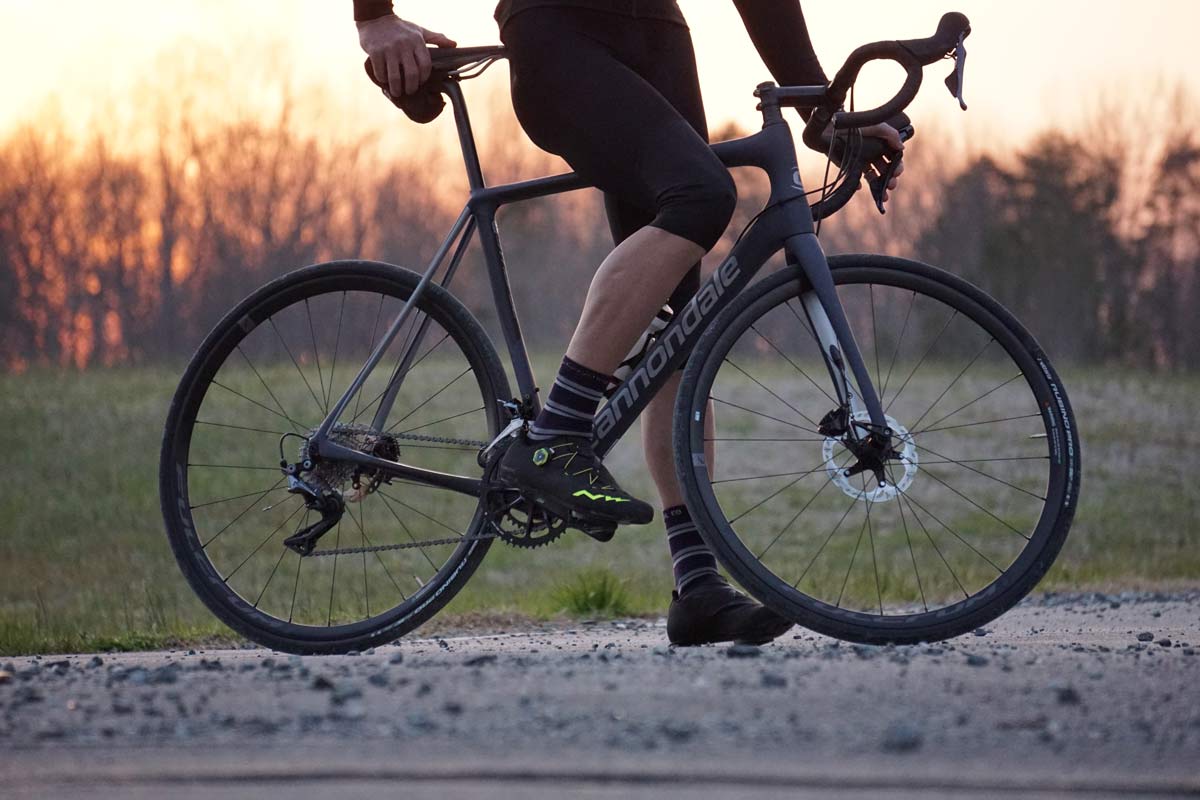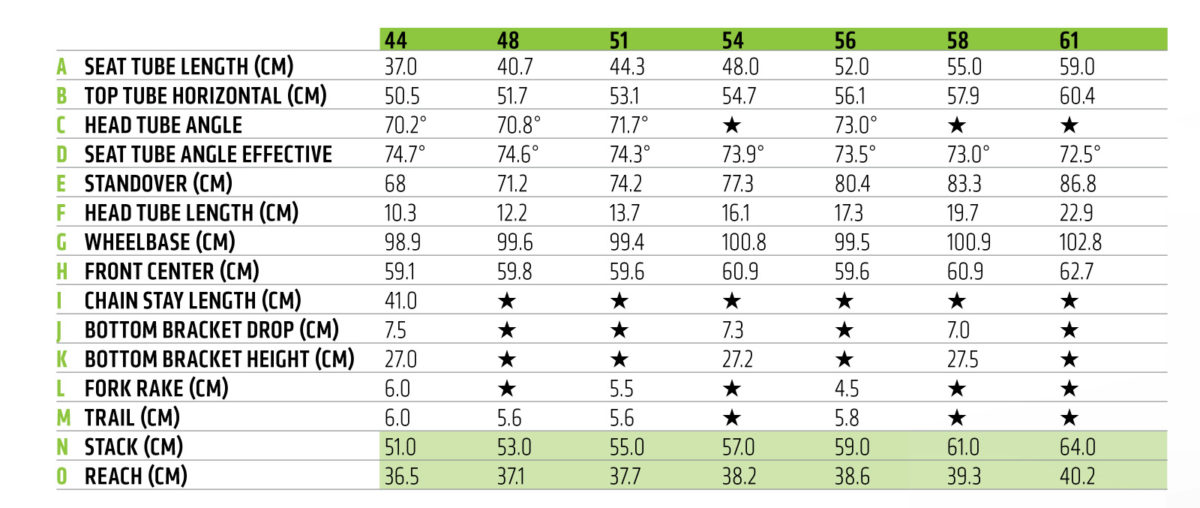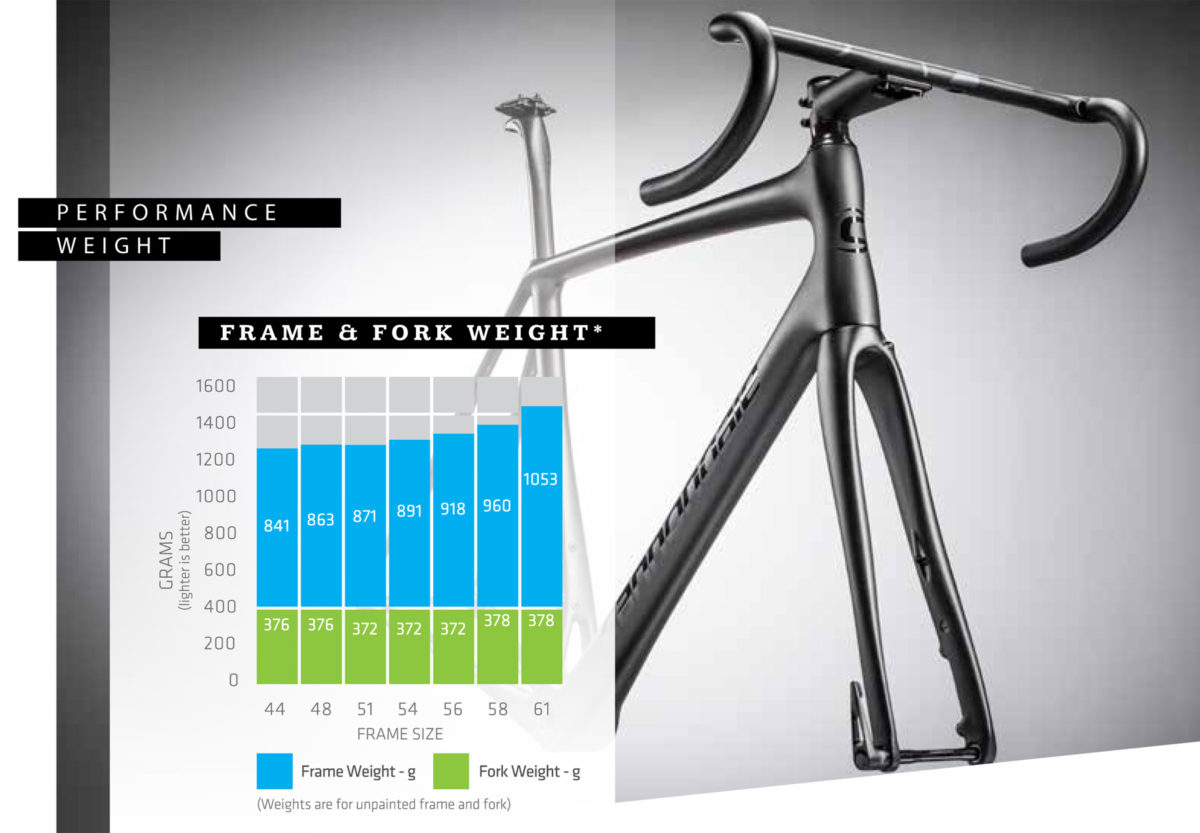Introduced last year, the 2018 Cannondale Synapse was designed as an endurance race bike. Whether you wanted to go fast or go long, or both, its combination of a stiff but forgiving frame, big tire clearance, and intentional compliance could deliver. Add in much improved looks over earlier models, sleek cable routing and a hidden seatpost binder, and it looks very much like the total package riders who just like to ride a lot. Here’s how it performed…
2018 Cannondale Synapse Carbon Disc Overview
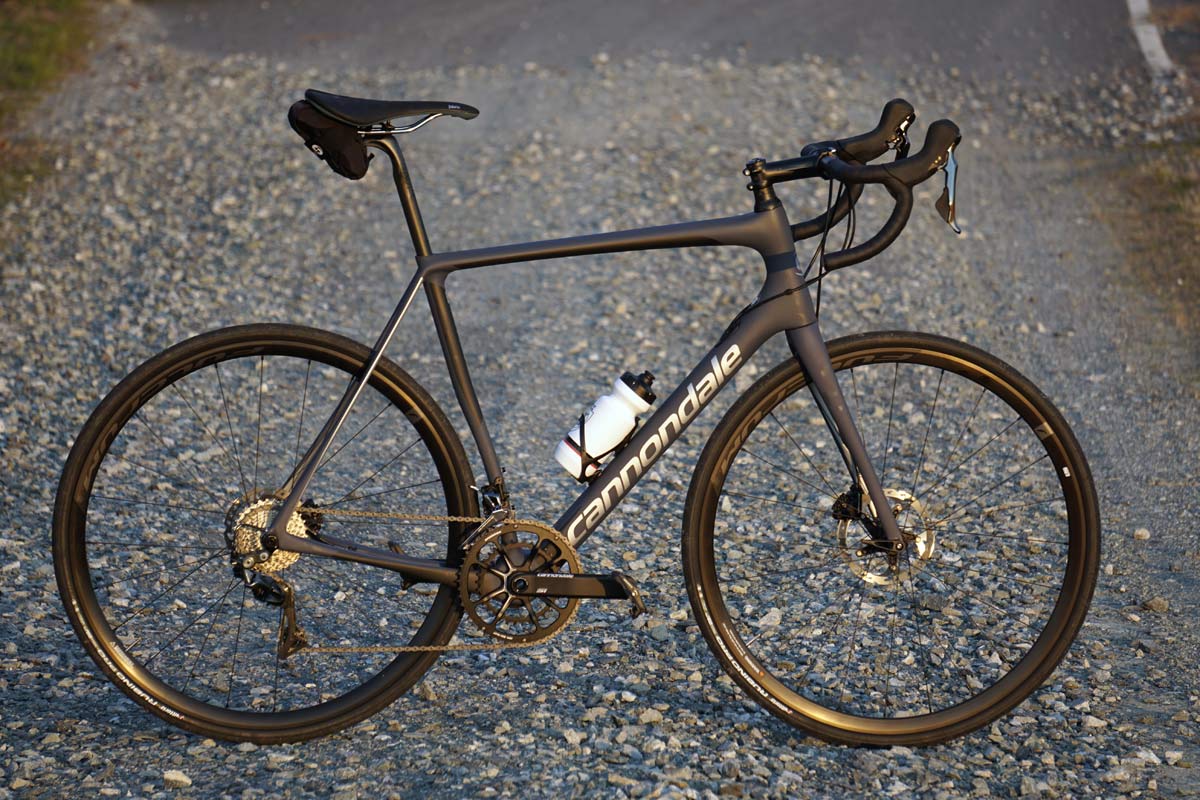
The 2018 Synapse is offered in two frame trims – the HiMod at the top, and this Carbon model with BallisTec layups. Both versions benefit from their SAVE micro suspension at the seat- and chainstays, fork, and seatpost. And both get some of their “Si” Systems Integration, though nowhere near the level of the latest SuperX or Scalpel bikes. No, there’s no asymmetric rear end or wheel builds here, letting you swap in any modern thru axle disc brake wheelset.
Well, technically, it is an asymmetric design, but only in that driveside and braking areas are reshaped and strengthened to handle those stresses. The seat tube is offset to the left to clear the front derailleur and maximize cross section, and the chainstays are shaped differently to improve tire clearance and use a double chainring.
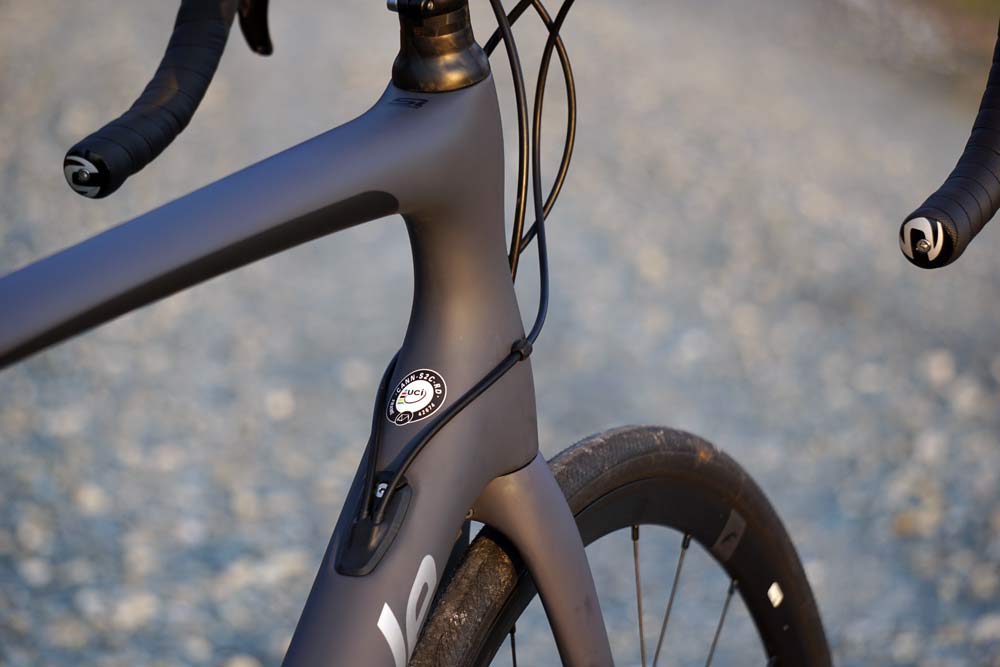
More to the point, the Si takes the form of functional improvements like modular cable ports that can be swapped for Di2 junction box holders on bike equipped with electronic shifting.
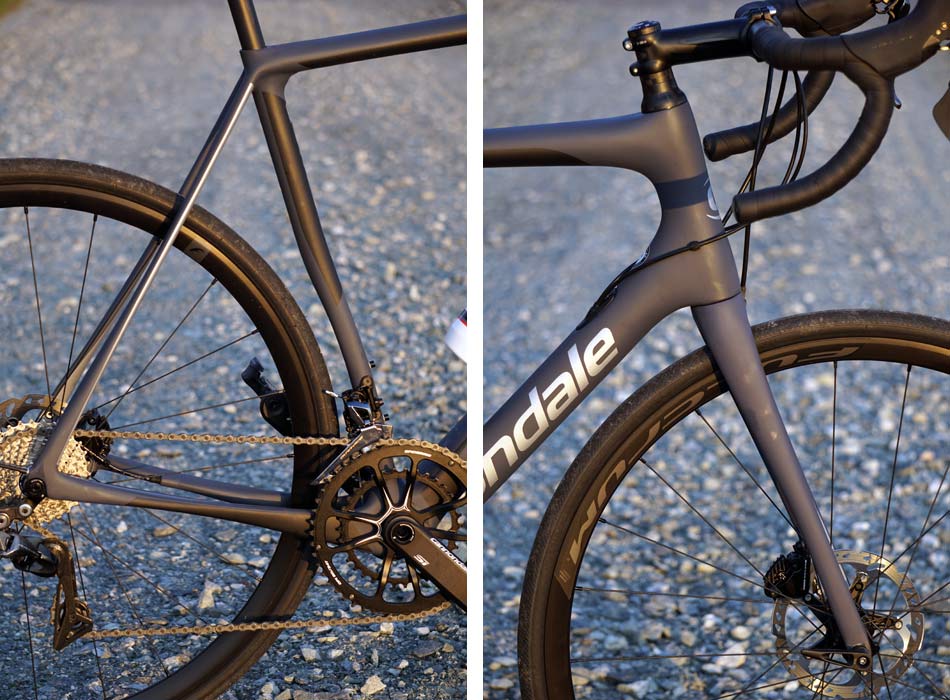
And flattened, shaped stays and fork legs designed to improve vertical compliance without losing lateral rigidity. Others do this, Cannondale’s been doing it longer, and it shows through in the ride quality.
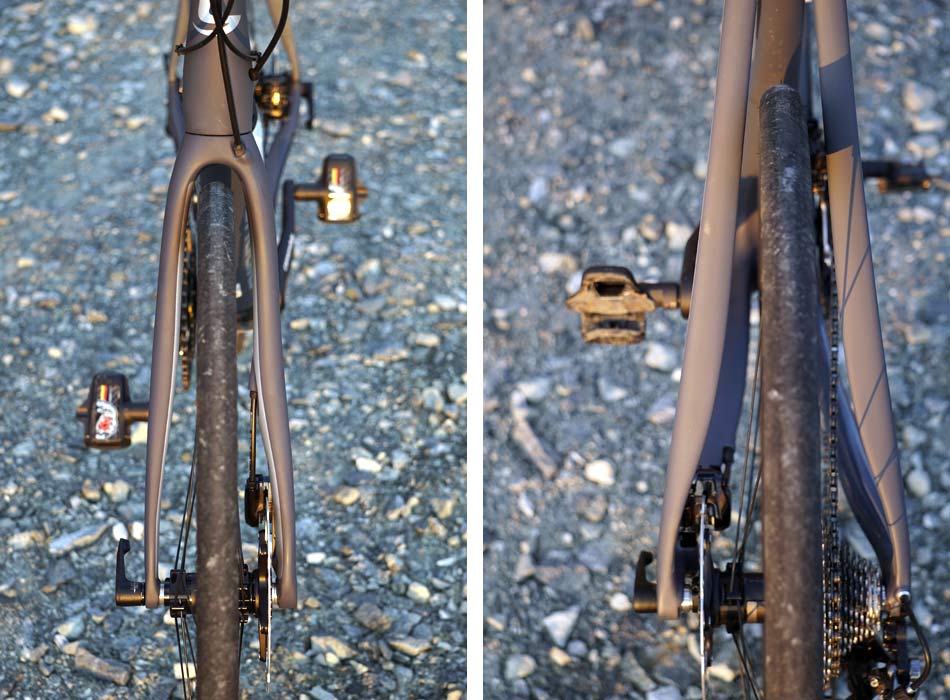
The frame is rated to clear 32mm (measured) tires, it’s shown here with the stock Vittoria Rubino Pro 700×28 tires.
Not noticeable are the three different fork offsets, lower bearing sizes and frame layups used across the size spectrum. All done to keep the ride quality consistent across the the line, whether you’re riding a 44 or 61 (58 tested).
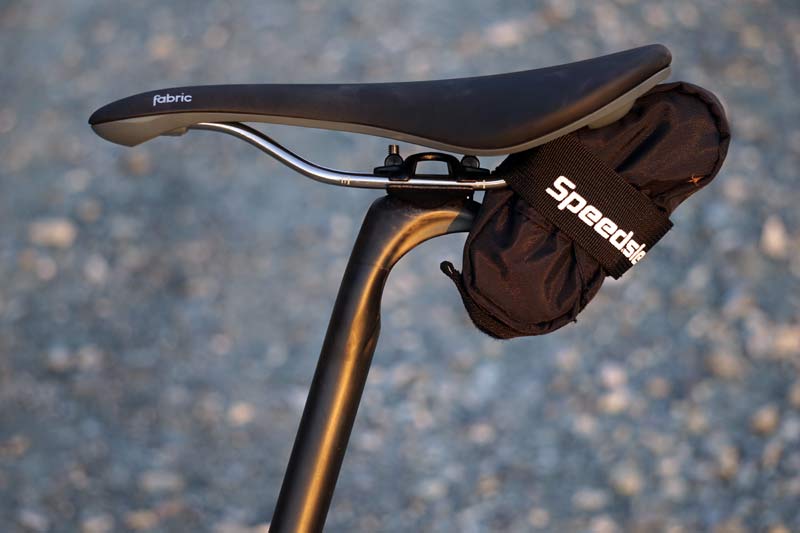
The last piece of the SAVE puzzle is their 25.4 seatpost with built in flex. On some flex posts, I can look down while pedaling and see the saddle’s nose bobbing up and down. It’s not as dramatic here, but as a package with the frame, it all seems to work quite well to mute the physically draining white noise of crappy roads.


The one piece of Si we love to see on their bikes is the one-piece SpideRing chainring on their lightweight Si cranks. It’s stiff, light, and looks bad ass. It also shifts well. As with any 50/34 combo, there’s an increased likelihood of the chain trying to catch the big ring when you’re in the small/small combo – proper drivetrain setup is key, and best to just shift the front before getting completely cross chained in the 34.
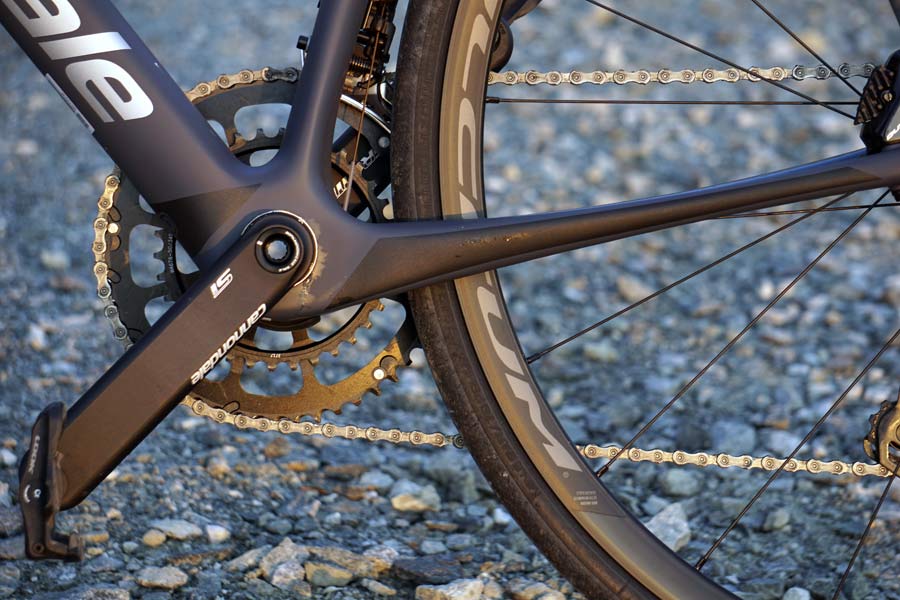
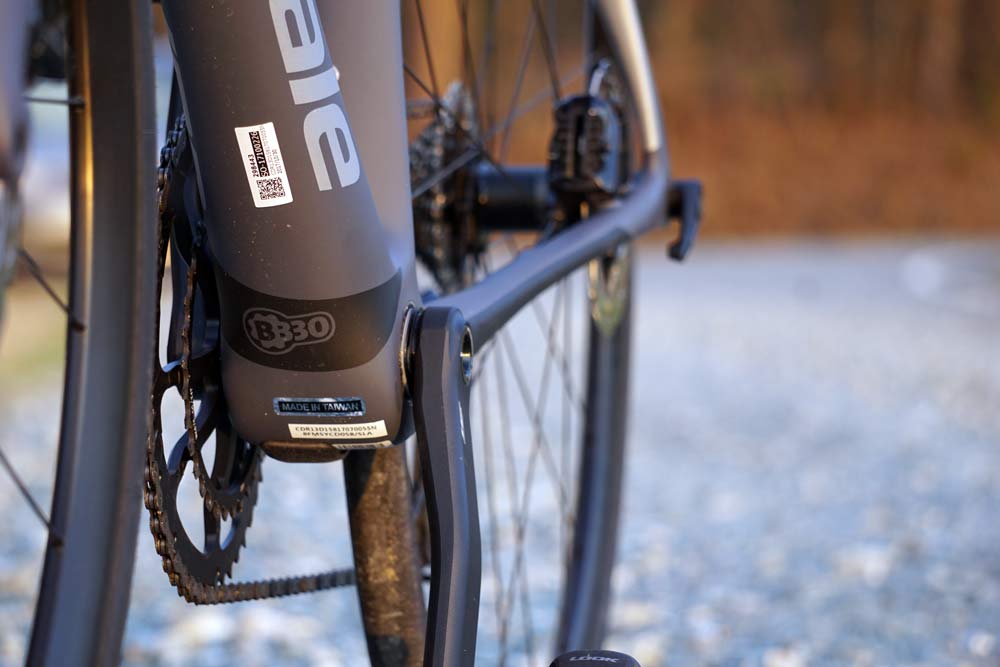
Half the story of this bike is its comfort. The other half is performance. Note how the seat tube comes flush to the edge of the BB shell. And that the BB shell and downtube are way oversized compared to the actual crank spindle. They say it’s slightly stiffer than prior models, with the fork/head tube getting the biggest improvement, and that it’s comparable to many modern road race bikes. The idea is to deliver race level performance when it’s time to stand up and hammer or take a pull on your local “A” group ride.
The geometry plays a part, too. It sits comfortably (pun intended) between a crit bike and a fondo bike, with a lower BB for better handling, but slightly more upright riding position. Sounds counterintuitive, but it works.
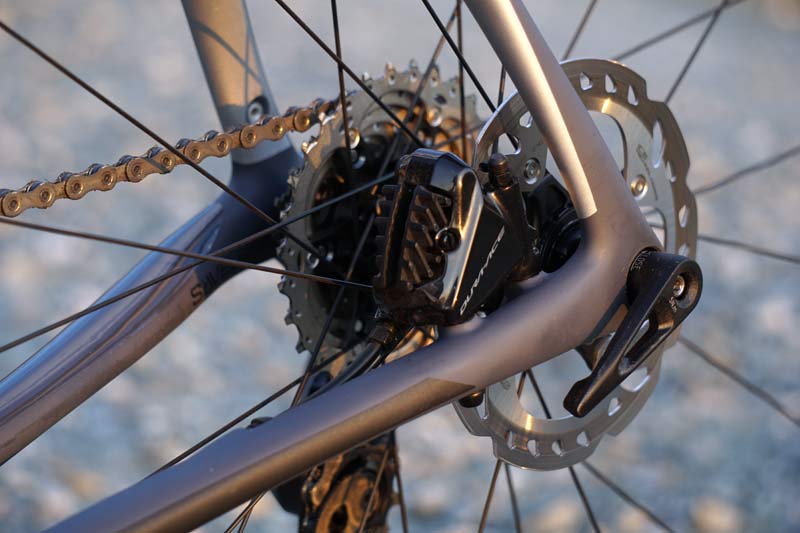
Finishing things off are tidy appointments like flat mount brakes…
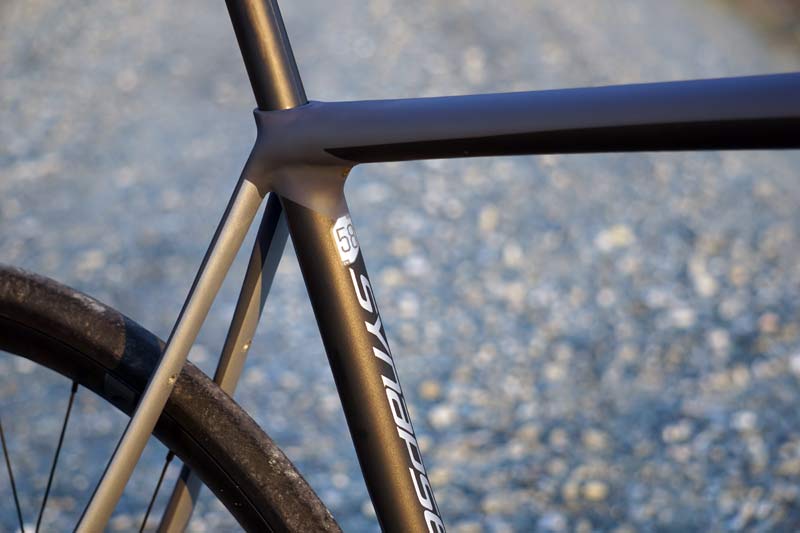
…a hidden seatpost binder…
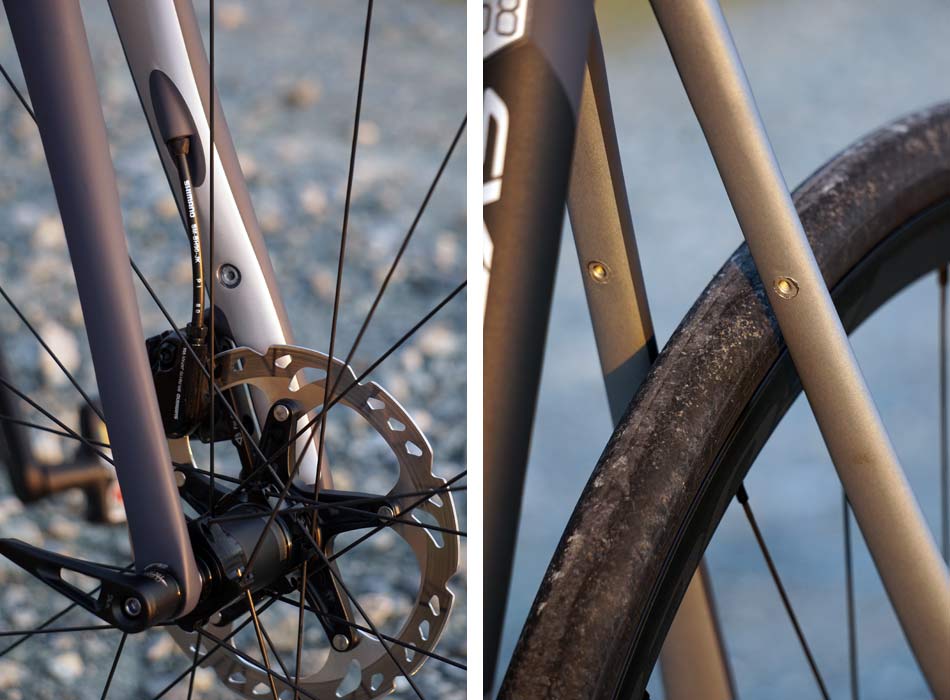
…and stealth fender mounts. Frames ship with a fender mount brake bridge part to provide the centered fender mount.
Side note: You may recall that “Power Pyramid” split seat tube from the launch photos (and on their website), but that feature is only on the HiMod models. Don’t fret – Cannondale’s Director of Product Marketing Murray Washburn says you get about 98% of the benefit from this standard ovalized seat tube. With the Power Pyramid, they’re concentrating all of the material out on the edges where it’s doing more good, so stiffness to weight is improved, but in the end you’re talking about minimal if any weight savings and marginal gains. Unless you’re a pro, the real reason to upgrade to the HiMod frame is that you’re saving 180-200g depending on paint and frame size. The HiMod frames use a higher modulus carbon, letting them use less of it to accomplish the same frame stiffness and ride quality.
Pricing, Specs & Actual Weight
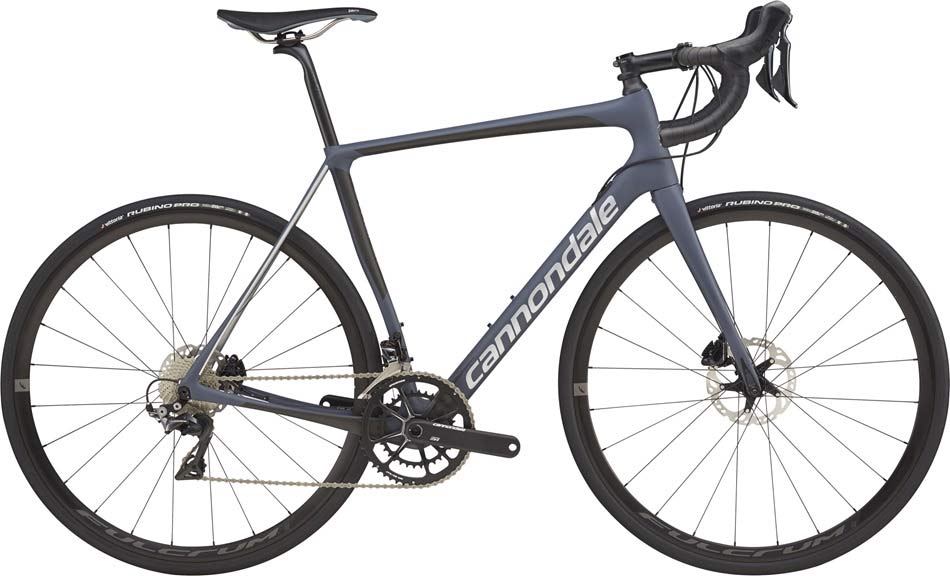
As tested, the Cannondale Synapse Carbon Disc Dura-Ace comes in at $4,999. It’s spec’d with a Shimano Dura-Ace mechanical shifters/derailleurs with hydraulic disc brakes, Ultegra 11-30 cassette, and save for the Cannondale Si crankset (50/34), Fulcrum Racing 500 wheels, Vittoria Rubino tires, Cannondale alloy bar and stem, and a Fabric Scoop saddle.
Above it is the Carbon eTap model ($5,999) and below it an Ultegra Di2 ($4,199) bike. HiMod models start at $6,499.
This chart shows HiMod frame weights, add 180-200g for the Carbon models. They say a 56 Carbon is about 1,100 grams.
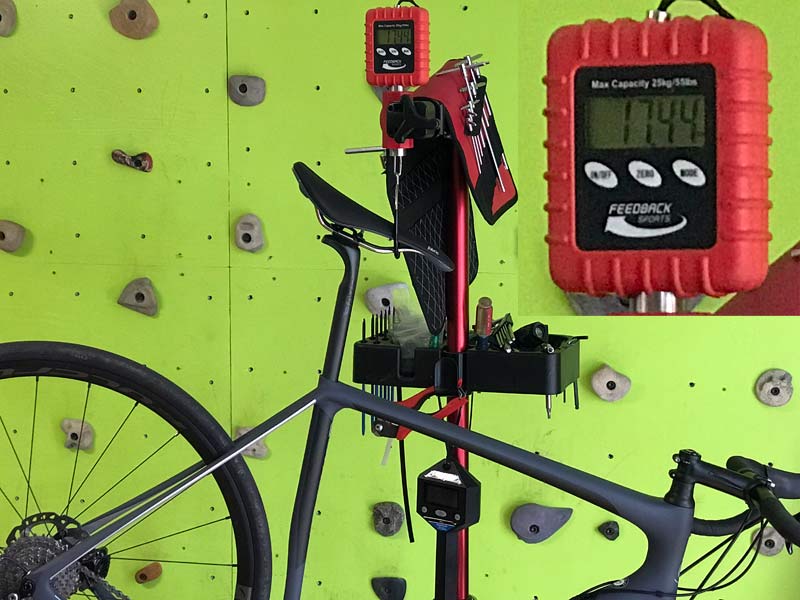
Actual weight for the complete bike (size 58) with tubes in the tires is 17.44lb (7.91kg).
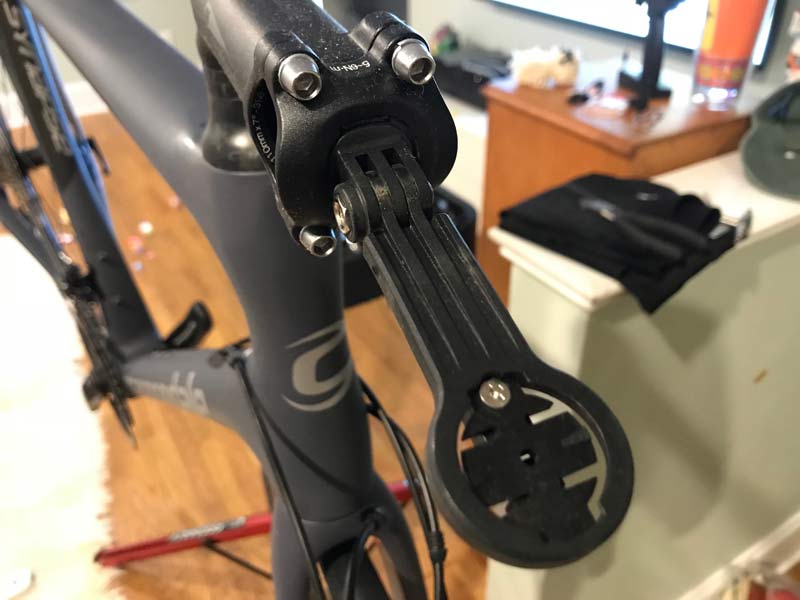
A nice added bonus is the included integrated Garmin mount that slots through the stem’s face plate. They’re working on a Wahoo version, too.
2018 Cannondale Synapse Ride Review
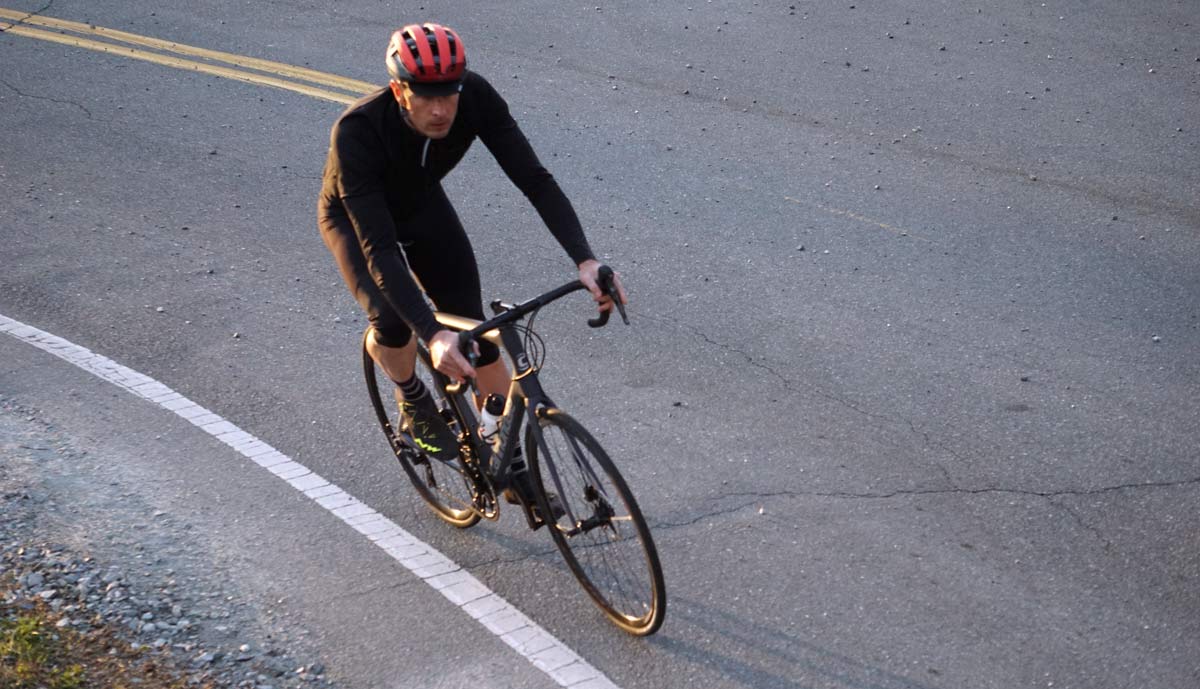
I’ll get straight to it: The Cannondale Synapse rides exactly like I want a road bike to ride. It’s comfortable yet quick. Stable without being slow. Drive it hard into a corner and it’ll oblige. Or take your hands off the bars to stretch and it’ll keep pedaling along perfectly straight. And if you happen upon a stretch of gravel, don’t be afraid to take it.
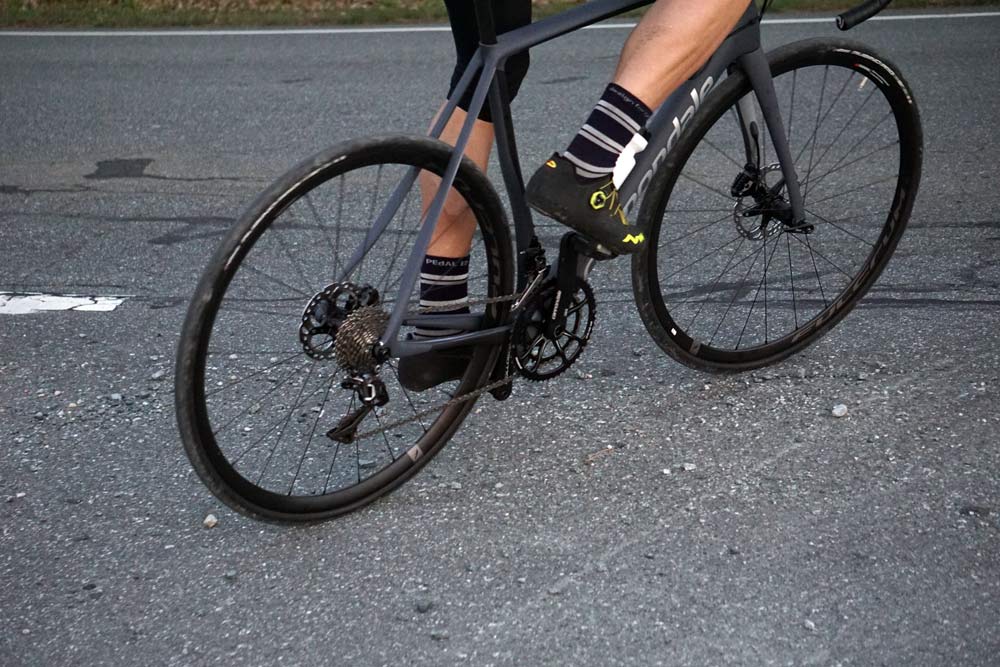
The Synapse is not intended to be a gravel bike, and I wouldn’t use it as such. But get out on the country roads or unincorporated areas and sometimes that asphalt can ride like gravel. Patches, chip seal and weather worn roadways can ride rough, but often lead to the best places. Low traffic rides, rolling hills and interesting scenery are often my rewards for taking random turns or heading well outside the county limits.
These leisurely but long rides make up about half of my road riding, and the Synapse is the perfect partner here. The frame’s features combine to provide stable, comfortable riding that makes its benefits obvious. This isn’t theoretical vibration minimization that may leave you feeling fresher after hours in the saddle. This is real bump absorption that I could notice immediately and often.
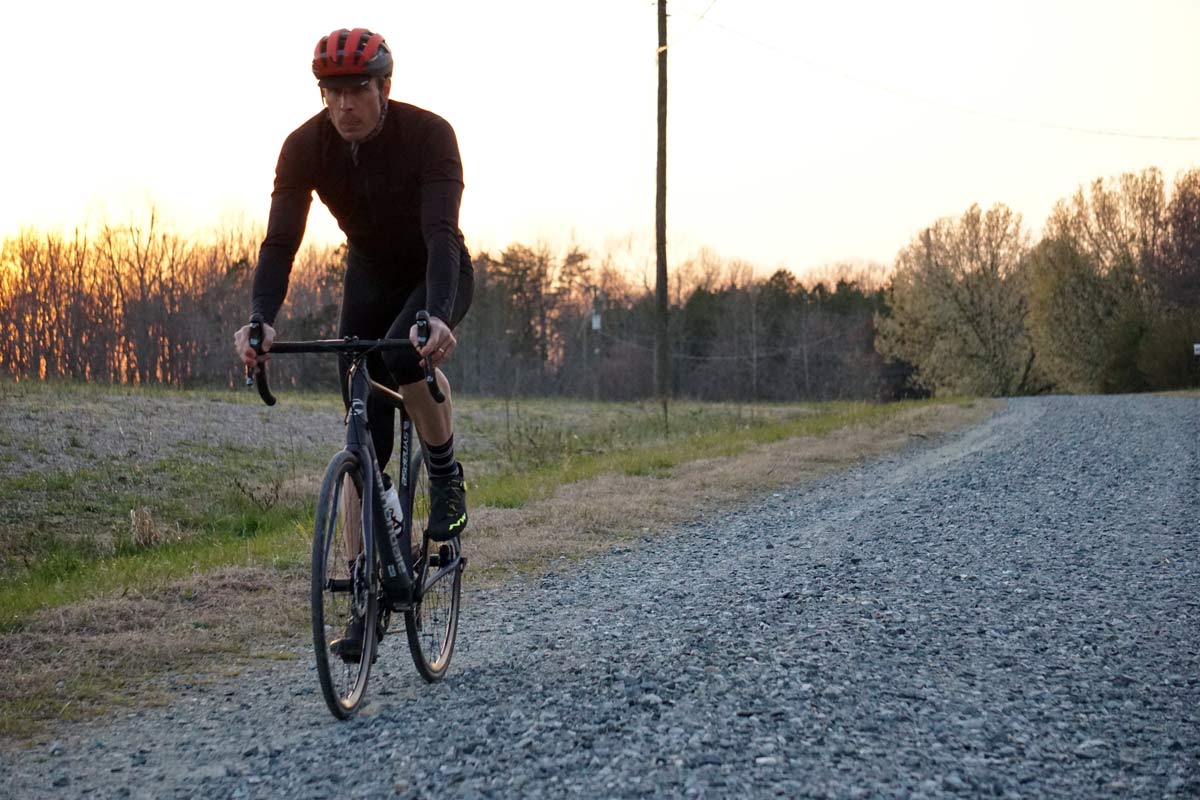
The other half of my rides are short sprints and intervals, my attempt at building power and speed for cyclocross season. Here, the Synapse is quite capable, too. The entire drivetrain section responds quickly, as it should.
The only area where the comfort outweighed all out performance was occasional front rotor rub under hard efforts. It didn’t require dramatic side-to-side pitching in standing sprints, either – any respectable out of the saddle effort or stomping up a climb could induce a rhythmic “tchssh tchssh” noise from the front brake. To be fair, a lot of disc brake road bikes do this, so it’s not a Cannondale problem, just something worth noting.
From a practical perspective, the Synapse is all positives. It benefits from all the right Cannondale technologies and designs without requiring custom offset cranks, chainrings or wheels. It rides like a dream, comes in a wide range of sizes, trim levels and prices, and is reasonably light. If your idea of road riding is just to get outside and enjoy a ride, sometimes long and slow, sometimes hard and fast, I’d highly recommend giving the Synapse a test ride.
I’m enjoying the bike so much, Cannondale’s letting us hang on to it for a while longer to test other components. This will include new wheels from Shimano and Industry Nine, along with wider tires. Stay tuned…
